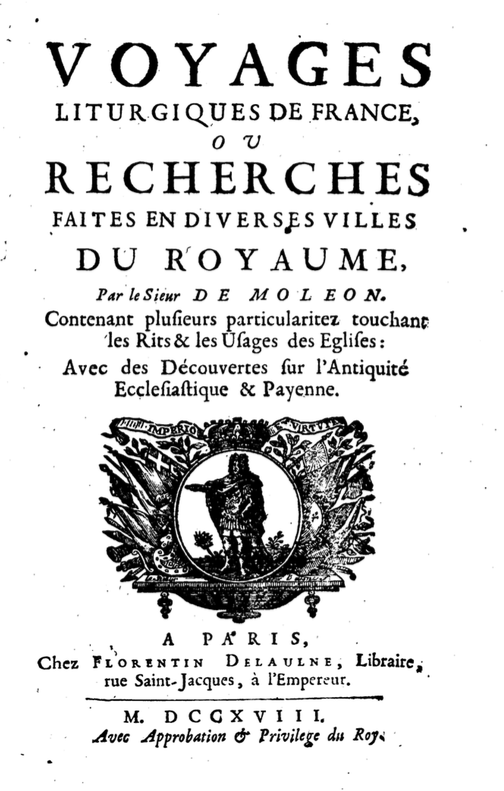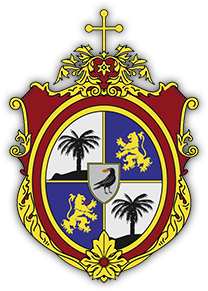Text from Wikipedia - the free encyclopædia,
unless otherwise stated.

English: Pope Saint Marcellus I.
Italiano: Papa Marcelo I.
This File: 29 October 2008.
User: Ilmari Karonen.
(Wikimedia Commons)
“Missa Papæ Marcelli”
(Pope Marcellus Mass).
Composed by: Palestrina.
Sung by: The Tallis Scholars.
Available on YouTube at
Pope Saint Marcellus I († 309 A.D.) was The Pope from May or June 308 A.D. to his death in 309 A.D. He succeeded Pope Marcellinus after a considerable interval. Under Emperor Maxentius, he was banished from Rome in 309 A.D., on account of the tumult caused by the severity of the penances he had imposed on Christians who had lapsed under the recent Persecution. He died the same year, being succeeded by Pope Eusebius. His Relics are under The High Altar of San Marcello-al-Corso, in Rome. His Feast Day is 16 January.
For some time after the death of Pope Marcellinus in 304 A.D., The Diocletian Persecution continued with unabated severity. After the Abdication of Emperor Diocletian in 305 A.D., and the accession in Rome of Emperor Maxentius to the Throne of The Caesars in October of the following year, the Christians of the Capital again enjoyed comparative peace.
The High Altar, San Marcello-al-Corso, Rome,
under which are the Relics of Pope Saint Marcellus I.
Photo: 20 July 2007.
Source: Own work.
Author: SteO153
(Wikimedia Commons)
At Rome, Marcellus found The Church in the greatest confusion. The meeting-places and some of the burial-places of The Faithful had been confiscated, and the ordinary life and activity of The Church was interrupted.
Added to this, were the dissensions within The Church, itself, caused by the large number of weaker Members, who had fallen away during the long period of Active Persecution and, later, under the leadership of an Apostate, violently demanded that they should be re-admitted to Communion without doing Penance.
According to “The Liber Pontificalis”, Marcellus divided the territorial administration of The Church into twenty-five Districts (Tituli), appointing over each a Presbyter, who saw to the preparation of The Catechumens for Baptism and directed the performance of public penances.
English: The Church of San Marcello-al-Corso, Rome, Italy,
where the Relics of Pope Saint Marcellus I lie under The High Altar.
Italiano: Chiesa San Marcello-al-Corso, Rome
Photo: 13 November 2005.
Source: Own work.
Author: sv:User:Torvindus
(Wikimedia Commons)
The Presbyter was also made responsible for the burial of the dead and for the Celebrations Commemorating the deaths of The Martyrs.
The Pope also had a new burial-place, the Cœmeterium Novellœ on The Via Salaria (opposite The Catacomb of Saint Priscilla), laid out. “The Liber Pontificalis” (ed. Duchesne, I, 164) says: "Hic fecit cymiterium Novellae via Salaria et XXV titulos in urbe Roma constituit quasi diœcesis propter baptismum et pœnitentiam multorum qui convertebantur ex paganis et propter sepulturas martyrum".
At the beginning of the 7th-Century A.D., there were probably twenty-five Titular Churches in Rome; even granting that, perhaps, the compiler of “The Liber Pontificalis” referred this number to the time of Marcellus, there is still a clear historical Tradition, in support of his declaration, that the Ecclesiastical administration in Rome was re-organised by this Pope after “The Great Persecution”.
The work of The Pope was, however, quickly interrupted by the controversies to which the question of the re-admittance of “The Lapsi” [Editor: “The Lapsed Members of The Church”] into The Church gave rise.
The Pope also had a new burial-place, the Cœmeterium Novellœ on The Via Salaria (opposite The Catacomb of Saint Priscilla), laid out. “The Liber Pontificalis” (ed. Duchesne, I, 164) says: "Hic fecit cymiterium Novellae via Salaria et XXV titulos in urbe Roma constituit quasi diœcesis propter baptismum et pœnitentiam multorum qui convertebantur ex paganis et propter sepulturas martyrum".
At the beginning of the 7th-Century A.D., there were probably twenty-five Titular Churches in Rome; even granting that, perhaps, the compiler of “The Liber Pontificalis” referred this number to the time of Marcellus, there is still a clear historical Tradition, in support of his declaration, that the Ecclesiastical administration in Rome was re-organised by this Pope after “The Great Persecution”.
The High Altar, San Marcello-al-Corso, Rome,
under which are the Relics of Pope Saint Marcellus I.
Photo: 20 July 2007.
Source: Own work.
Author: SteO153
(Wikimedia Commons)
The work of The Pope was, however, quickly interrupted by the controversies to which the question of the re-admittance of “The Lapsi” [Editor: “The Lapsed Members of The Church”] into The Church gave rise.
As to this, we gather some light from the poetic tribute composed by Pope Damasus I, in Memory of his predecessor and placed over his grave (De Rossi, "Inscr. christ. urbis Romæ", II, 62, 103, 138; cf. Idem, "Roma sotterranea", II, 204–5).
Pope Damasus relates that Pope Marcellus was looked upon as a wicked enemy by all the lapsed, because he insisted that they should perform the prescribed Penance for their guilt. As a result, serious conflicts arose, some of which ended in bloodshed, and every bond of peace was broken. At the head of this band of dissenters was an Apostate who had denied The Faith even before the outbreak of persecution.
The tyrannical Emperor Maxentius had the Pope seized and sent into Exile. This took place at the end of 308 A.D., or the beginning of 309 A.D., according to the passages cited above from “The Catalogus Liberianus”, which gives the length of the Pontificate as no more than one year, six (or seven) months, and twenty days. Marcellus died shortly after leaving Rome, and was Venerated as a Saint.
His Feast Day was 16 January, according to the Depositio episcoporum of the Chronography of 354 A.D., and every other Roman authority. Nevertheless, it is not known whether this is the date of his death or that of the burial of his remains, after these had been brought back from the unknown quarter to which he had been exiled.
Pope Damasus relates that Pope Marcellus was looked upon as a wicked enemy by all the lapsed, because he insisted that they should perform the prescribed Penance for their guilt. As a result, serious conflicts arose, some of which ended in bloodshed, and every bond of peace was broken. At the head of this band of dissenters was an Apostate who had denied The Faith even before the outbreak of persecution.
The tyrannical Emperor Maxentius had the Pope seized and sent into Exile. This took place at the end of 308 A.D., or the beginning of 309 A.D., according to the passages cited above from “The Catalogus Liberianus”, which gives the length of the Pontificate as no more than one year, six (or seven) months, and twenty days. Marcellus died shortly after leaving Rome, and was Venerated as a Saint.
“The Liber Pontificalis”.
“The Book of Pontiffs”.
Artist: Domenico Ghirlandaio (1449–1494).
Title: Saint Jerome in his Study.
Saint Jerome, who, since the 9th-Century A.D.,
has been viewed as the original author of “The Liber Pontificalis”.
Date: 1480.
Current location: Chiesa di Ognissanti, Florence, Italy.
Source/Photographer: http://www.artunframed.com/
(Wikimedia Commons)
Church of All Saints (Chiesa di Ognissanti), Florence, Italy.
This is where The Liber Pontificalis is currently located (see, above).
Photo: 19 May 2007.
Source: Own work.
Author: sailko
(Wikimedia Commons)
He was buried in the Catacomb of Saint Priscilla, where his grave is mentioned by the itineraries to the graves of The Roman Martyrs as existing in The Basilica of Saint Silvester (De Rossi, Roma sotterranea, I, 176).
A 5th-Century A.D. "Passio Marcelli", which is included in the legendary account of The Martyrdom of Saint Cyriacus (cf. Acta Sanct., Jan., II, 369) and is followed by “The Liber Pontificalis”, gives a different account of the end of Marcellus. According to this version, The Pope was required by Emperor Maxentius, who was enraged at his re-organisation of The Church, to lay aside his Episcopal dignity and make an offering to the Roman gods.
A 5th-Century A.D. "Passio Marcelli", which is included in the legendary account of The Martyrdom of Saint Cyriacus (cf. Acta Sanct., Jan., II, 369) and is followed by “The Liber Pontificalis”, gives a different account of the end of Marcellus. According to this version, The Pope was required by Emperor Maxentius, who was enraged at his re-organisation of The Church, to lay aside his Episcopal dignity and make an offering to the Roman gods.
On his refusal, he was condemned to work as a slave at a station on the public highway (“catabulum”). At the end of nine months, he was set free by The Clergy; but a Matron, named Lucina, having had her house on The Via Lata Consecrated by him as "Titulus Marcelli", he was again condemned to the work of attending to the horses brought into the station, in which menial occupation he died.
All this is probably legendary, the reference to the restoration of Ecclesiastical activity by Marcellus alone having an historical basis. The tradition related in the verses of Damasus seems much more worthy of belief.
All this is probably legendary, the reference to the restoration of Ecclesiastical activity by Marcellus alone having an historical basis. The tradition related in the verses of Damasus seems much more worthy of belief.
The Feast of Saint Marcellus, whose name is to this day borne by The Church at Rome, mentioned in the above legend, is still Celebrated on 16 January. There still remains to be mentioned Mommsen's peculiar view that Marcellus was not really a Bishop, but a simple Roman Presbyter, to whom was committed the Ecclesiastical administration during the latter part of the period of vacancy of The Papal Chair. According to this view, 16 January was really the date of Marcellus' death, the next occupant of The Papal Chair being Eusebius (Neues Archiv, 1896, XXI, 350–3). This hypothesis has, however, found no support.
The following Text is from The Saint Andrew Daily Missal.
Saint Marcellus.
Saint Marcellus.
Pope and Martyr.
Feast Day 16 January.
Semi-Double.
Red Vestments.
As Supreme Head of The Church (Introit, Gradual) at the time of the last Persecutions of The Roman Emperors, Saint Marcellus bore witness to The Divinity of Christ "by losing his life for His sake" (Gospel).
The Holy Widow, Lucina, having offered him her house, he transformed it into a Church, now called Saint Marcellus's. Emperor Maxentius transferred there certain deer from the public stables and condemned the Holy Pope to keep them. His sufferings, tempered by Divine Consolation, made him feel all the more for the troubles of his flock (Epistle). Exhausted by ill-treatment, conquered by pain, he died in 309 A.D.
His heroic resistance, against which The Caesar's violence was broken, proves that Jesus is God, for "it is His powerful hand that succours His servant, and His arm which strengthens him, so that the enemy shall not get the better of him" (Gradual).
The Divine Reign of The Saviour will indeed soon be acknowledged and, with The Emperor Constantine, The Church of Rome, "Queen of Churches", as Saint Marcellus called her, will be Queen of the World, not only in The Spiritual Order, but also in The Temporal.
Let us imitate the courage of the Holy Pontiff, Marcellus, in defending The Divine Rights of Christ, in order that they may be manifested again by The triumph of The Church.
Mass: Státuit ei Dominus: (First Mass of a Martyr Bishop).
Feast Day 16 January.
Semi-Double.
Red Vestments.
As Supreme Head of The Church (Introit, Gradual) at the time of the last Persecutions of The Roman Emperors, Saint Marcellus bore witness to The Divinity of Christ "by losing his life for His sake" (Gospel).
The Holy Widow, Lucina, having offered him her house, he transformed it into a Church, now called Saint Marcellus's. Emperor Maxentius transferred there certain deer from the public stables and condemned the Holy Pope to keep them. His sufferings, tempered by Divine Consolation, made him feel all the more for the troubles of his flock (Epistle). Exhausted by ill-treatment, conquered by pain, he died in 309 A.D.
His heroic resistance, against which The Caesar's violence was broken, proves that Jesus is God, for "it is His powerful hand that succours His servant, and His arm which strengthens him, so that the enemy shall not get the better of him" (Gradual).
The Divine Reign of The Saviour will indeed soon be acknowledged and, with The Emperor Constantine, The Church of Rome, "Queen of Churches", as Saint Marcellus called her, will be Queen of the World, not only in The Spiritual Order, but also in The Temporal.
Let us imitate the courage of the Holy Pontiff, Marcellus, in defending The Divine Rights of Christ, in order that they may be manifested again by The triumph of The Church.
Mass: Státuit ei Dominus: (First Mass of a Martyr Bishop).
Collects: Are Proper to Saint Marcellus' Feast Day.

























